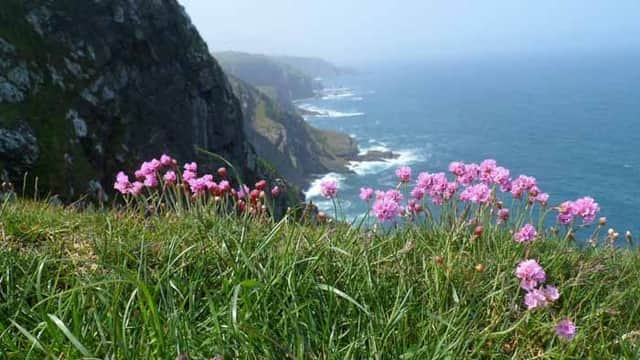Forth to Farne Way pilgrimage route to formally open


The Forth to Farne Way, one of five long distance Pilgrims’ Ways currently under development in Scotland, will take modern-day pilgrims along pathways and through places linked to Christianity’s earliest days in Scotland.
Several of the ancient Celtic saints are identified with places along the Forth to Farne Way including St Baldred, St Cuthbert, St Aidan and St Ebba.
Advertisement
Hide AdAdvertisement
Hide AdPilgrims travelled the coastal route from Lindisfarne to St Andrews in mediaeval times, crossing the Firth of Forth by ferry from North Berwick.
The modern-day 72-mile pilgrim route, which will be launched on Sunday, follows parts of three well-marked designated footpaths: the John Muir Way, and the Berwickshire and Northumberland coastal paths.
A steering group of local volunteers have worked for three years to develop the route, identifying 11 stages, varying from two miles to 13 miles, where waymarkers and support services are planned to be sited.
Secretary of the Scottish Pilgrim Routes Forum, Nick Cooke, said today: “The route goes through some very important places with a strong pilgrimage heritage, from Whitekirk, East Lothian, to Coldingham Priory which was one of the largest Benedictine monasteries in Scotland in its day.
“The steering group volunteers have done tremendous work, but there is a lot more to be done.
“The next stage will be to develop waymarking and interpretation to tell the stories of these special places as well as provide accommodation for pilgrim walkers making this journey.”
Places of interest along the route include the Scottish Seabird Centre at North Berwick; St Andrews Kirk, also in North Berwick; Preston Mill; Fast Castle; St Abbs harbour and the Lindisfarne causeway and Priory.
Sunday’s launch will follow a special service marking the centenary of the rededication of St Mary’s Parish Church, Whitekirk, after its restoration from a devastating fire in February 1914.
Advertisement
Hide AdAdvertisement
Hide AdRestoration of the kirk, one of the very few mediaeval parish churches still in active use in Scotland, began in 1917 - and has taken 100 years.
Opening
Lord Wilson of Tillyorn, Patron of the Scottish Pilgrim Routes Forum and former Lord High Commissioner of the Church of Scotland, will formally open the new route at a service in St Mary’s tomorow, Sunday 15th October, at 11am.
A group of people will walk a section of the route from Whitekirk to North Berwick after the official opening ceremony.
The Rev Joanne Evans-Boiten, minister of Whitekirk, who initiated the effort to develop the new route, said today/yesterday [FRI]: “We are very excited to be launching the new route on Sunday and everyone is welcome to join us on the walk.”
She described Whitekirk as “one of many sites” along the route that attracted pilgrims in the late Middle Ages.
From the 1300s, miracles were being reported by people drinking at a nearby “holy” well.
By 1413, there were some fifteen thousand visitors to the village, and King James I placed the church under his protection, building hostels to shelter the growing number of pilgrims. Among them was the future Pope Pius II, who walked there barefoot through snow from Dunbar to give thanks for having been spared a shipwreck there in 1435.
The Rev Evans-Boiten said: “Thousands of people came to Whitekirk because of the very famous holy well. That is why we have such a large church in such a small place.
Advertisement
Hide AdAdvertisement
Hide Ad“The story is that Agnes Countess of Dunbar had sustained injuries defending Dunbar castle when it was under siege. She visited a hermit living near Whitekirk and he told her to go to the holy well and drink the water.
“After visiting the well the Countess was healed and she went on to put up a shrine here that became famous throughout Europe. We have a record of the story written by one of the pilgrims who visited here and who later in his life became Pope Pius II.
“After the Reformation people changed their ideas about pilgrimages and holy places so Whitekirk was no longer considered an important place to visit. Sadly we now don’t now know where the well was.”
A search for the well is continuing.
The Rev Evans-Boiten added: “We have looked but so far no-one has managed to find it. Maybe it will be rediscovered in the future.”
Meanwhile, the volunteer group has produced a leaflet about the route and a booklet that tells the stories of the saints.
